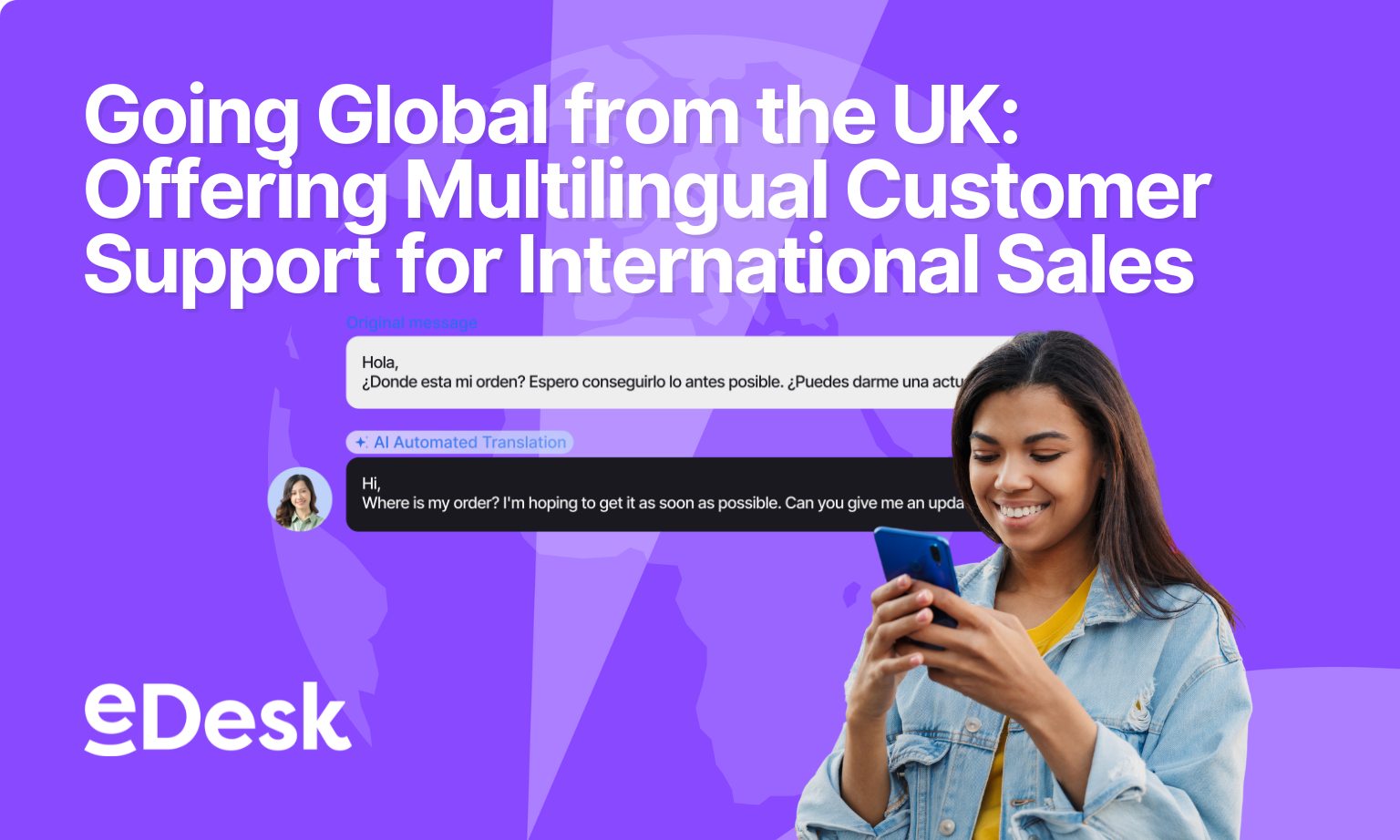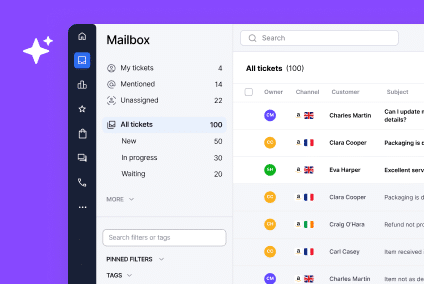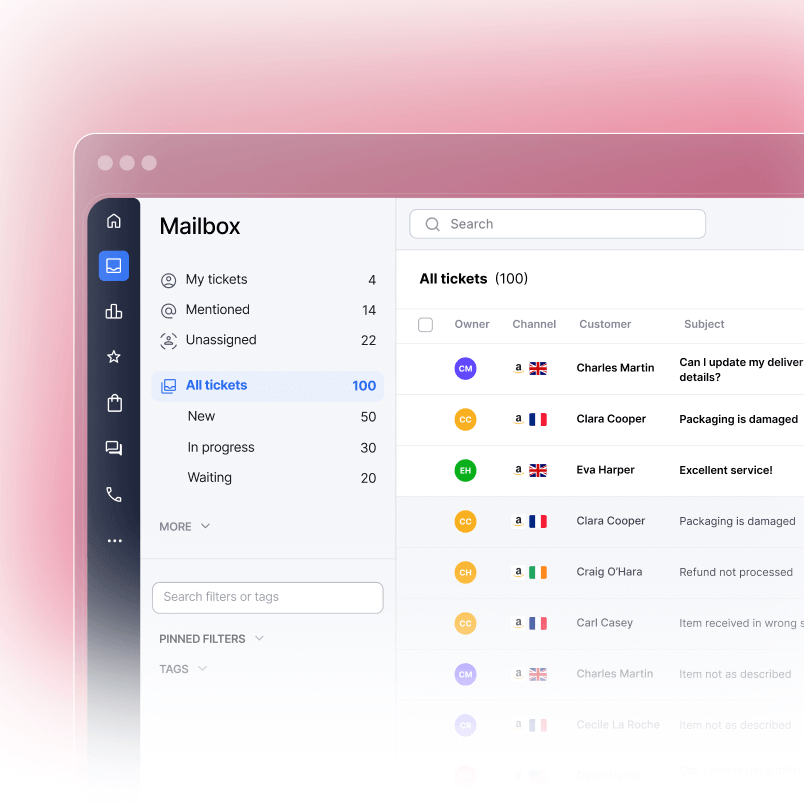The Global Opportunity for UK Businesses
UK businesses are increasingly looking beyond domestic borders to fuel growth. Recent research shows that almost a third (28%) of UK domestic businesses are considering international expansion in the next three years – the highest level in the last two years. With the UK ranking as the 3rd largest eCommerce market worldwide, the foundation for international success is already in place.
However, success in global markets requires more than just shipping products abroad. For UK businesses venturing into international markets, implementing robust multilingual support for UK business strategies isn’t just a nice-to-have; it’s essential for sustainable growth.
Why Multilingual Support Matters for Cross-Border eCommerce
The statistics speak volumes about the importance of language in international commerce. Harvard Business Review reveals that 72% of shoppers are more likely to buy from sites written in their native language. This preference extends beyond marketing materials to encompass the entire customer experience, particularly customer service interactions.
Companies providing multilingual support report 20% higher customer retention rates, demonstrating the tangible business impact of language accessibility. When customers can communicate in their preferred language, they’re not just more likely to purchase – they’re more likely to remain loyal customers.
For UK businesses expanding into cross-border eCommerce UK markets, this presents both an opportunity and a challenge. The opportunity lies in international markets; the challenge is delivering personalised, language-specific international customer service that global customers increasingly expect.
Key Markets and Languages for UK Exporters
Understanding where UK businesses are expanding helps determine which languages to prioritise. For UK companies, the United States remains the top destination (35%), followed by Australia (21%), Canada (21%), Germany (20%), UAE (16%), France (15%) and China (12%).
This expansion pattern suggests several critical languages:
European Customers: With Germany and France ranking high on UK export destinations, German and French language support becomes essential. Spain also represents a significant opportunity, making Spanish equally important for European expansion.
US Market: While sharing English as a common language, consider offering Spanish-language support for the growing Hispanic population.
Emerging Markets: The UAE and China represent opportunities where Arabic and Mandarin support could provide competitive advantages.
Building Your International Customer Service Strategy
Start with Data-Driven Language Selection
Before implementing multilingual support, analyse your current customer base and expansion plans:
- Existing international sales patterns
- Website traffic sources by country
- Market research showing growth potential
- Competitor language offerings
Implement Scalable Technology Solutions
Modern technology makes multilingual support more accessible than ever:
AI-Powered Translation Tools: Solutions like eDesk AI Translation provide real-time translation capabilities, allowing your existing team to communicate effectively with customers in multiple languages without requiring native speakers for every interaction.
Multilingual Knowledge Bases: Create self-service resources in key languages, reducing support ticket volume while providing immediate assistance to international customers.
Language Detection Systems: Implement systems that automatically detect customer language preferences and route inquiries to appropriate support channels.
Build a Diverse Support Team
While technology provides excellent support, human interaction remains crucial. Hiver’s ‘AI vs Human customer service’ report found that 52% of customers prefer talking to human support agents. Consider:
- Native Speaker Recruitment: Hire support representatives who are native speakers of your target languages
- Cultural Training: Language fluency alone isn’t sufficient – team members need understanding of cultural differences
- Flexible Scheduling: Consider time zone differences when staffing multilingual support teams
The Role of Cultural Sensitivity in Global Support
Effective multilingual support extends beyond language translation to encompass cultural sensitivity. Different cultures have varying expectations for customer service interactions, communication styles, and response times. While 90% of customers say a quick response is critical when they have a question, with 60% expecting “immediate” responses within 10 minutes, these expectations can vary significantly across cultures.
Technology Solutions for Multilingual eCommerce Support
The landscape of language translation tools has evolved dramatically. Modern platforms like Avaamo support 114 languages and dialects with automatic language detection, while Helpshift offers real-time translation for over 150 languages. These solutions enable businesses to automatically detect customer language preferences, provide real-time translation during live chat sessions, and scale support operations without proportionally increasing staff.
For businesses seeking to implement Best AI Customer Support Tools for Multilingual eCommerce, the key is finding solutions that balance automation with human oversight and integrate seamlessly with existing CRM systems, eCommerce platforms, and analytics tools.
Measuring Success and Overcoming Challenges
Key metrics to track include customer satisfaction scores across language groups, response times, resolution rates, and revenue impact from customers receiving native language support versus English-only service.
Common challenges include cost management and quality control. Consider a phased approach: start with one or two key languages, leverage AI translation tools to extend existing team capabilities, and implement standardised processes with regular quality monitoring.
The Business Case for Investment
The financial impact justifies the investment for most UK businesses expanding internationally. The global language services market is expected to reach $90.82 billion by 2029, growing at 10.1% annually. For UK businesses specifically, the UK cross-border eCommerce market had a market share of USD 39.89 billion in 2024 and is projected to grow at a CAGR of 29.8%.
Creating Your Multilingual Support Roadmap
Phase 1: Assess current international customers and identify top 2-3 languages based on business impact
Phase 2: Implement AI translation capabilities, create multilingual knowledge bases, and train existing team on cultural sensitivity
Phase 3: Hire native speakers for high-volume languages and implement advanced analytics
Phase 4: Optimise based on performance metrics and expand to additional languages
Consider A Guide To Multilingual Customer Support for advanced strategies.
Looking Forward
As UK businesses continue expanding globally, those who master multilingual customer support will gain significant competitive advantages. Future trends include enhanced AI translation accuracy, sophisticated voice support capabilities, and deeper integration between multilingual support tools and business systems.
Bottom Line: Multilingual support isn’t just about translation – it’s about building trust, demonstrating respect for international customers, and creating the foundation for sustainable global growth. UK businesses that invest in comprehensive multilingual customer service strategies position themselves to capture a larger share of the growing international eCommerce market.
Ready to Transform Your Global Customer Experience?
Implementing multilingual support represents a significant opportunity to differentiate your UK business in competitive international markets. With the right combination of technology, cultural understanding, and strategic planning, you can create customer experiences that drive loyalty and revenue across global markets.
Transform your international customer service capabilities and unlock global growth potential. Try eDesk for free today and discover how our AI-powered multilingual support tools can help you deliver exceptional customer experiences in any language, anywhere in the world.




